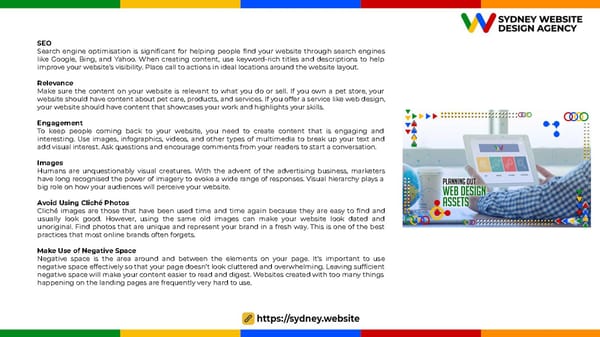SEO Search engine optimisation is significant for helping people find your website through search engines like Google, Bing, and Yahoo. When creating content, use keyword-rich titles and descriptions to help improve your website’s visibility. Place call to actions in ideal locations around the website layout. Relevance Make sure the content on your website is relevant to what you do or sell. If you own a pet store, your website should have content about pet care, products, and services. If you offer a service like web design, your website should have content that showcases your work and highlights your skills. Engagement To keep people coming back to your website, you need to create content that is engaging and interesting. Use images, infographics, videos, and other types of multimedia to break up your text and add visual interest. Ask questions and encourage comments from your readers to start a conversation. Images Humans are unquestionably visual creatures. With the advent of the advertising business, marketers have long recognised the power of imagery to evoke a wide range of responses. Visual hierarchy plays a big role on how your audiences will perceive your website. Avoid Using Cliché Photos Cliché images are those that have been used time and time again because they are easy to find and usually look good. However, using the same old images can make your website look dated and unoriginal. Find photos that are unique and represent your brand in a fresh way. This is one of the best practices that most online brands often forgets. Make Use of Negative Space Negative space is the area around and between the elements on your page. It’s important to use negative space effectively so that your page doesn’t look cluttered and overwhelming. Leaving sufficient negative space will make your content easier to read and digest. Websites created with too many things happening on the landing pages are frequently very hard to use.
 Web Design Best Practices, Every Successful Website Must Have Page 8 Page 10
Web Design Best Practices, Every Successful Website Must Have Page 8 Page 10